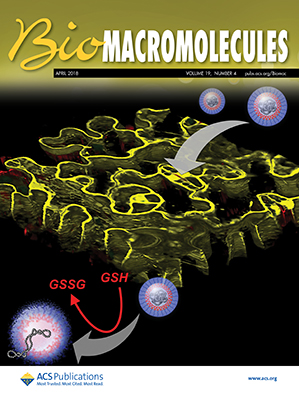A Hydrogel Implantable Supercapacitor with Tissue-Adhesive Using PEDOT:PSS as Active Material
IF 5.4
2区 化学
Q1 BIOCHEMISTRY & MOLECULAR BIOLOGY
引用次数: 0
Abstract
Implantable biomedical supercapacitors represent a critical advancement in modern biomedical engineering, offering an optimal power solution for implantable medical devices due to their exceptional characteristics. However, achieving supercapacitors that concurrently exhibit tissue adhesiveness and biocompatibility remains a significant research challenge. In this study, the DMSO post-treatment method is employed to enhance the condensed state structure of the conductive polymer PEDOT:PSS, which results in a significant improvement in the electrochemical performance of the supercapacitor embedded within the poly(acrylic acid) hydrogel matrix. This supercapacitor demonstrates a capacity retention rate of 97.81% after 10 000 charging–discharging cycles. Additionally, it exhibits favorable mechanical properties (tensile strain of 233%) and strong tissue adhesiveness (viscous frictional stress of 6.42 kPa). Following implantation in mice, this device also exhibits excellent biocompatibility. These findings suggest that this technology can significantly advance the energy supply for microintelligent medical devices.
- Download: Download high-res image (129KB)
- Download: Download full-size image
以PEDOT:PSS为活性材料的组织胶粘剂水凝胶植入式超级电容器。
植入式生物医学超级电容器是现代生物医学工程的重要进展,由于其独特的特性,为植入式医疗设备提供了最佳的电源解决方案。然而,实现同时具有组织粘附性和生物相容性的超级电容器仍然是一个重大的研究挑战。本研究采用DMSO后处理方法增强导电聚合物PEDOT:PSS的凝聚态结构,使得嵌套在聚丙烯酸水凝胶基体内的超级电容器的电化学性能得到显著提高。该超级电容器在10 000次充放电循环后的容量保持率为97.81%。此外,它还具有良好的力学性能(拉伸应变为233%)和较强的组织粘附性(粘性摩擦应力为6.42 kPa)。在小鼠体内植入后,该装置也表现出良好的生物相容性。这些发现表明,该技术可以显著推进微智能医疗设备的能源供应。
本文章由计算机程序翻译,如有差异,请以英文原文为准。
求助全文
约1分钟内获得全文
求助全文
来源期刊

Biomacromolecules
化学-高分子科学
CiteScore
10.60
自引率
4.80%
发文量
417
审稿时长
1.6 months
期刊介绍:
Biomacromolecules is a leading forum for the dissemination of cutting-edge research at the interface of polymer science and biology. Submissions to Biomacromolecules should contain strong elements of innovation in terms of macromolecular design, synthesis and characterization, or in the application of polymer materials to biology and medicine.
Topics covered by Biomacromolecules include, but are not exclusively limited to: sustainable polymers, polymers based on natural and renewable resources, degradable polymers, polymer conjugates, polymeric drugs, polymers in biocatalysis, biomacromolecular assembly, biomimetic polymers, polymer-biomineral hybrids, biomimetic-polymer processing, polymer recycling, bioactive polymer surfaces, original polymer design for biomedical applications such as immunotherapy, drug delivery, gene delivery, antimicrobial applications, diagnostic imaging and biosensing, polymers in tissue engineering and regenerative medicine, polymeric scaffolds and hydrogels for cell culture and delivery.
 求助内容:
求助内容: 应助结果提醒方式:
应助结果提醒方式:


